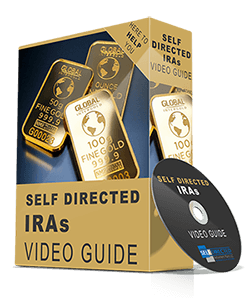What is an IRA? How does an IRA work?
What is an IRA (Individual Retirement Account)?
An individual retirement account (IRA) is a type of retirement plan that allows you to save for retirement on a tax-deferred basis or tax-free growth.
While your IRA account can certainly hold cash, it has a bigger purpose; it is set up to hold investments that help you achieve better returns than what you’d get by keeping the money in your bank saving account.
Types of IRAs
There are different types of IRAs, as follows:
- Traditional IRA
- Roth IRA
- SIMPLE IRA
- SEP IRA
- HSA Plan
- Self-directed IRA
- ESA Plan
- Non-deductible IRA
- Spousal IRA
- Rollover IRA
- Inherited Retirement Account IRA
Note: Each type of IRA has a different tax treatment. Therefore, it is important that you discuss your goals and situation with a tax professional to decide which type of IRA is best suited for you.
Benefits of investing in an IRA
According to most financial experts, you may need up to 85% of your pre-retirement income in retirement. An employer-sponsored retirement savings plan, such as a 401(k), may not be enough to accumulate that kind of money. However, the good news is that you can contribute to both a 401(k) and an IRA and save enough money to live comfortably in retirement.
Reasons why you should invest in an IRA:
- You can make many small contributions to the account until you reach your full contribution limit. You can automate your IRA contributions, monthly, weekly, biweekly, or whichever works best for you.
- IRA has some incredible tax advantages.
- IRAs offer a vast range of investment options.
- The income generated through interest, capital gains, and dividends grows each year through the power of compounding without any tax implications.
- You can take out money for qualified education expenses, home purchase, and health insurance without attracting any penalty.
- You don’t have to be employed to contribute to the IRA. A spouse who has no earned income can contribute to a spousal Roth or traditional IRA, provided their spouse has earned income, and the couple files a joint tax return.
- You can contribute to a Roth IRA, regardless of whether you have contributed to your employer retirement account or not, as long as you meet the income eligibility requirements.
- You can open a custodial Roth IRA for your child under 18 years, who has earned income from jobs like babysitting or mowing lawns, provided these earnings are reported to the IRS.
IRA Contribution Limits
According to the IRS, the contribution limits to a standard IRA for 202 are as follows:
-
When you have earned income, you can contribute up to the maximum annual limit of $7,000 in 2025, $7,000 in 2024, $6,500 in 2023, and $6,000 in 2022.
-
If you’re 50 or older, you can contribute an additional $1,000.
-
If you have more than one IRA, the total contribution you make to all your IRAs cannot exceed the annual contribution limit.
-
As long as you have earned income, you can contribute to Roth IRAs at any age.
-
Starting in 2025, as long as you are working, you can contribute to a traditional IRA; there is no age limit.
Detailed information on IRA Contribution Limits and Deadlines for 2024 & 2025
Who Can Open an IRA?
The following can open and contribute to an IRA:
- Any individual with earned income (income from a job) that is claimed for tax purposes.
- Any individual who has a spouse with earned income can open and contribute to an IRA.
How to Open an IRA?
Before you decide on the provider, ask yourself how much you want to get involved in managing your investments. Then follow these steps to open an IRA:
- Decide how much help you want: What type of investor you are — hands-on or hands-off?
- If you’d like to choose and manage your investments, you’ll need an online broker. You’ll need to open an account, and then you can use the account to buy and sell investments yourself.
- If you want to manage your investments in an automated way, consider a Robo-advisor. The Robo-advisor will choose low-cost funds in line with your investment preferences and timeline and rebalance your portfolio.
- Choose where to open your IRA: The next step is choosing a provider that fits your preference and the investor type mentioned above.
- Open an account: While opening the account, you may be asked a few general information, such as your birthdate, contact details, employment details, and Social Security number.
- Fund the account and get started: The next step is to determine how to fund your account. Generally, this is done by rolling over a 401(k), transferring funds from a bank account, or transferring existing IRA assets from a different firm into your new account.
Custodians/Where to Open an IRA
You can open an IRA at:
- Banks
- Investment firms
- Credit unions
- Other financial institutions
To help you determine where you should open your IRA, you can ask any provider about the types of investments available with them, the features, the annual custodial fees they charge, and other associated expenses.
Should I Open A Traditional IRA Or A Roth IRA?
Two factors will help you decide which one is best for you:
- If you expect your income to be higher in the future, you may fall into the higher tax bracket. In this case, opening a Roth IRA now might make more sense.
- If you are already in your top earning years, you can contribute to a Traditional IRA because, in retirement, you are more likely to fall in a lower tax bracket.
Investments Options for your IRA
Once you have the money into an IRA, you need to decide what to do with it.
The next step is investing your savings for long-term growth. IRA is like a bucket that you can fill with assets of your choice – cash, bonds, stocks, mutual funds, or exotic investments like peer-to-peer notes or gold. When you put these investments in the IRA bucket, they reap tax benefits, regardless of what account type you select, traditional or Roth.
Most popular investment options:
- Mutual funds
- Stocks
- ETFs
- Bonds and US Treasuries
- FDIC-insured CDs
- Annuities
History shows that the best way to save for long-term growth is by investing in stocks. Stock prices are known to have massive price swings than bonds or cash, but on average, stocks have dramatically outperformed both bonds and cash if kept for longer-term periods.
Procedure to withdraw money from your IRA
- Before you start withdrawal:
- Discuss your situation with your tax advisor
- Ensure that you have enough cash. Otherwise, you may have to sell a few of your investments.
- To start your withdrawal:
- Select which IRA you would like to withdraw the money from
- Select the method of receiving the money
- Enter the amount
- Specify tax withholding
- Sell your investments, if money is not enough to make the withdrawal.
- Review and confirm your transaction
Rules of Withdrawing Money From Your IRA
- Normal IRA Distributions (Withdrawals between age 59½ and 72*)Once you reach age 59½ or older, you can withdraw from your IRA without penalty. The IRS does not require you to make withdrawals from a Traditional or Rollover IRA until you turn 70½ years. However, you may be taxed on your withdrawal, depending on the type of account you hold (Traditional or Roth).To know more about the Traditional and Roth IRA withdrawal rules, click here.
- Early Withdrawals (Withdrawals prior to age 59½)If you make a withdrawal before you turn 59½, the IRS flags this transaction as an early withdrawal or an early distribution. So, before you make the withdrawal, consider these IRA rules:
- Your withdrawal may be taxed
- You may attract a penalty of 10% of the early withdrawal amount
- Depending on your situation, you may qualify for an exception to the early withdrawal penalties
Learn more about Traditional and Roth IRA withdrawal rules here.
- RMDs (Withdrawals at age 72* and beyond)If you’re 72 years and above, the IRS requires you to take your distributions from your IRA. These distributions are called Required Minimum Distributions or RMDs.If you have a Roth IRA, it is not mandatory for you to take your distributions at any age.If you have to take RMDs from a Traditional, SIMPLE, Rollover, or SEP IRA, consider these RMD rules:
- Your withdrawal may be taxed
- You have to take your RMD each year by December 31
- You have to take RMD every year after your turn 72
Click here to know the Traditional and Roth IRA withdrawal rules in detail.
Taking a Loan from the IRA
Whether you have a traditional or a Roth IRA, there is no such thing as an IRA loan. However, there is an exception to this rule: the 60-day rollover rule. The IRS allows you to take money from your IRA if you repay the amount in a qualified retirement account within 60 days.
There will be no penalty applied if you rollover the money into a new IRA account or redeposit it into the original IRA within the required time period.
IRA Rollover and Transfer
The IRS doesn’t count a rollover from a qualified retirement account, such as 401(k), or 403(b) into a new IRA as a withdrawal. Hence, no taxes or penalties are applied, regardless of your age, if you follow the IRS rules for rollovers.
The sole purpose of carrying out a rollover is to maintain the tax-deferred status of those assets.
When you move your money from one IRA to another, you are actually transferring the money directly from one financial institution to another. The money is not in your hand, and hence these transfers are penalty- and tax-free.
Similarly, if the IRA funds come to you and you redeposit them into a qualified account within 60 days, you’ll not be taxed or penalized. However, you can take advantage of this 60-day rollover rule once every 12 months; otherwise, your withdrawal can be considered as a taxable distribution.



